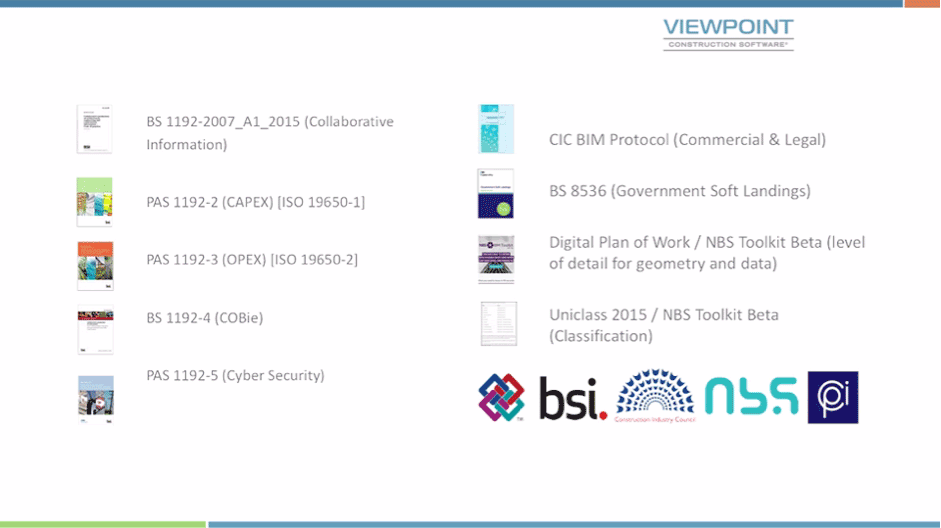UK Level 2 Standards
0%
Over the last couple of weeks we have talked about the crucial importance of working to standards to succeed with your BIM adoption. We’re really lucky in the UK that we have a great set of standards that have been developed over the last few years which both define what BIM Level 2 actually is and allow successful adoption of it.
In the graphic below you can see those standards.

BS1192 and PAS1192 are presented in 5 parts – it’s worth noting that within the next 18 months, parts 2 and 3 will become International Standards ‘ISO19650 1 and 2’.
The first of these five parts is BS1192-2007 – this has been around for a while and sets out the collaborative working methodologies and the way we share information, even in the 2D digital world.
PAS1192-2 is for the construction process itself and this deals with how we share model based information and data at these stages and like part 3, is to be used in conjunction with BS1192-2007 which has had a recent amendment with appendix 2015.
PAS1192 – 3 deals with the strategic and operational phases on an asset – and that really means setting out the things a good client should do in BIM terms.
BS1192 – 4 deals with the data deliverable – COBie.
PAS1192 – 5 deals with cyber security and it puts the onus on the client to appoint somebody to be the built asset security strategy manager and for the construction team to develop a built asset security strategy.
Sitting alongside BS1192 we have a suite of documents dealing with the commercial and legal aspects of Level 2 BIM which were developed by the CIC. There’s some guidance on PII (Professional Indemnity Insurance), some guidance on the appointment of an individual to the role of ‘Information Manager’ at each stage – but the most important of these documents is the CIC BIM protocol.
For Government projects BS8536 deals with the ‘Soft Landings Process’ – putting extra responsibility on to the construction team to help prepare the client for the use of the asset – and elongates the defects liability period to three years.
That leaves two key planks of supporting documentation of standards which aren’t quite finished (but have been released in beta) and that’s the ‘Digital Plan of Work’ (The NBS Toolkit) which deals with the level of detail in terms of geometry and level of information at each work stage and Uniclass 2015 which is the classification system.
In summary, we’ve got a really good comprehensive set of standards and supporting documentation to use on UK projects – and if we use them and become familiar with them I am convinced that Level 2 will be a success.


